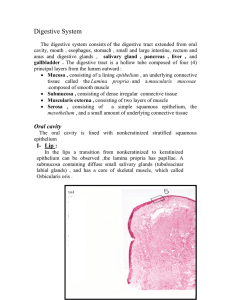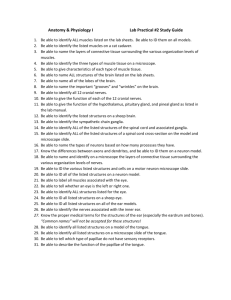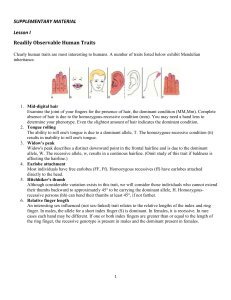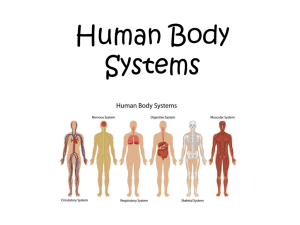Digestive system
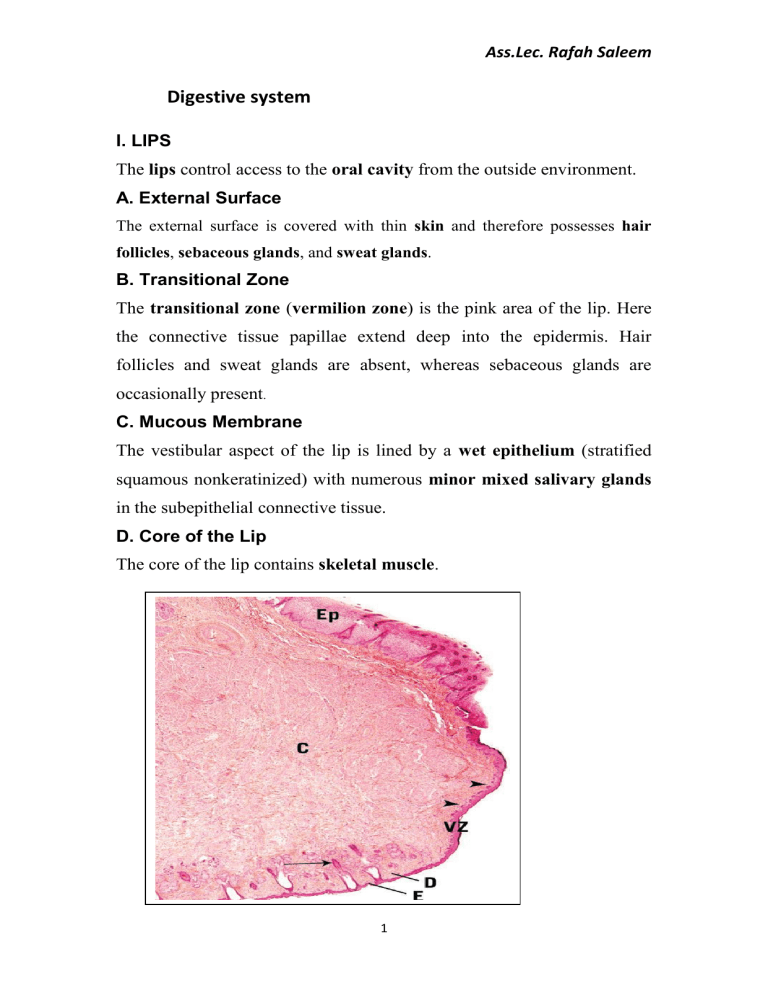
Digestive system
I. LIPS
The lips control access to the oral cavity from the outside environment.
A. External Surface
The external surface is covered with thin skin and therefore possesses hair follicles , sebaceous glands , and sweat glands .
B. Transitional Zone
The transitional zone ( vermilion zone ) is the pink area of the lip. Here the connective tissue papillae extend deep into the epidermis. Hair follicles and sweat glands are absent, whereas sebaceous glands are occasionally present
.
C. Mucous Membrane
The vestibular aspect of the lip is lined by a wet epithelium (stratified squamous nonkeratinized) with numerous minor mixed salivary glands in the subepithelial connective tissue.
D. Core of the Lip
The core of the lip contains skeletal muscle .
1
Ass.Lec. Rafah Saleem
Ass.Lec. Rafah Saleem
Ep epithelium
,
E epidermis
,
D dermis
,
VZ vermilion (red) zone
,
C core
II. TONGUE
The tongue is a muscular organ whose oral region is freely moving; its root is attached to the floor of the pharynx.
Skeletal muscle forms the core of the tongue, among which groups of serous and seromucous glands are interspersed.
A. Oral Region (Anterior Two-Thirds)
The mucosa of the dorsal surface of the anterior two thirds of the tongue is modified to form four types of lingual papillae.
1. Filiform Papillae
Filiform papillae are long and slender and are the most numerous. They form a roughened surface (especially in animals such as cats) and are distributed in parallel rows along the entire surface. They are covered by a parakeratinized stratified squamous epithelium (but bear no taste buds) over a connective tissue core .
2. Fungiform Papillae
Fungiform papillae are mushroom-shaped, are scattered among the
filiform papillae, and may be recognized by their appearance as red dots.
They contain taste buds along their dorsal aspect.
3. Foliate Papillae
Foliate papillae appear as longitudinal furrows along the side of the tongue near the posterior aspect of the anterior two-thirds. Their taste buds degenerate at an early age in humans. Serous glands of von Ebner are associated with these papillae.
4. Circumvallate Papillae
Circumvallate papillae are very large and form a V-shaped row at the border of the oral and pharyngeal portions of the tongue. Circumvallate papillae are each surrounded by a moat or groove, the walls of which
2
Ass.Lec. Rafah Saleem contain taste buds in their stratified squamous nonkeratinized epithelium .Serous glands of von Ebner open into the base of the furrow.
The connective tissue core of the circumvallate papilla possesses a rich nerve and vascular supply.
B. Pharyngeal Region (Posterior One-Third)
The mucosa of the posterior one-third of the tongue presents numerous lymphatic nodules that constitute the lingual tonsils .
epithelium connective tissue filiform papillae
superior longitudinal muscle inferior longitudinal muscle
3
